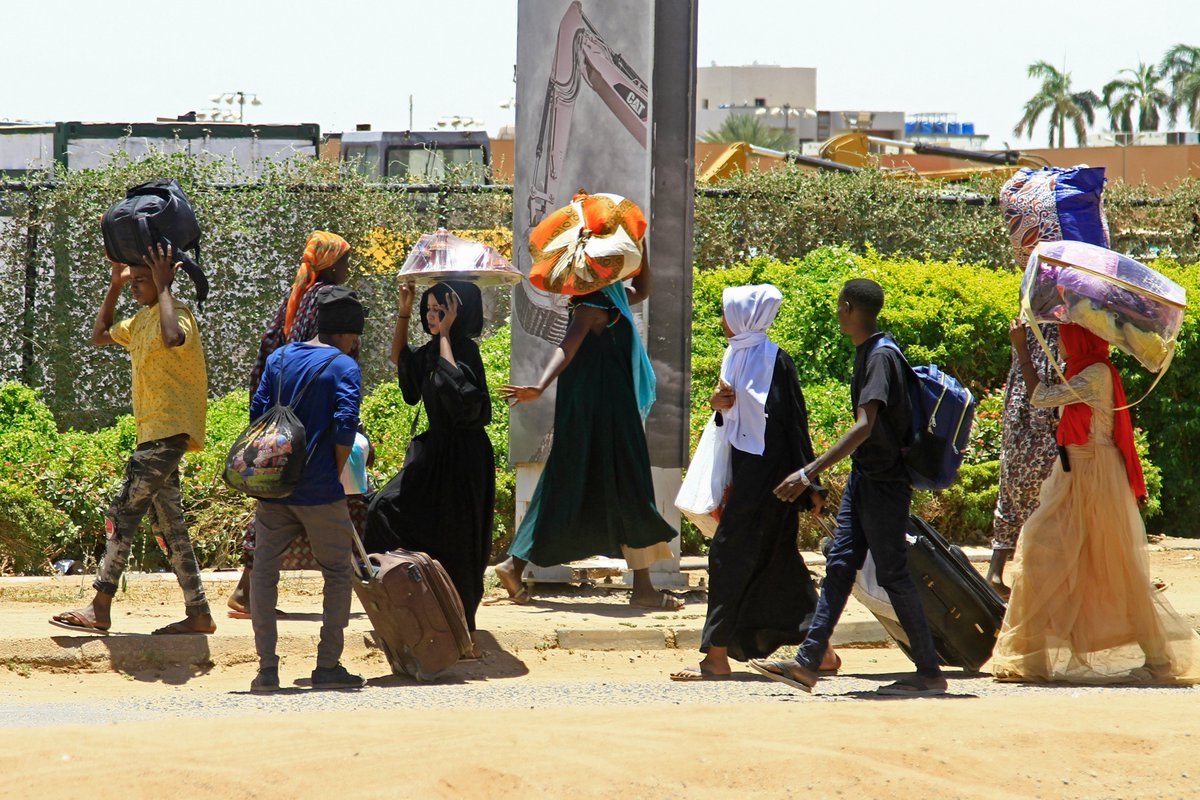

“This is the largest humanitarian crisis on the face of the planet. And yet, somehow, it threatens to get worse.” ~ Linda Thomas-Greenfield, the U.S. ambassador to the UN
April 2025 marked the start of the third year since the civil war began between the Sudanese Army and the paramilitary Rapid Support Forces (RSF) in Sudan. Now, the conflict is characterized by extreme violence and human rights abuses against civilians, including torture, sexual violence, arbitrary killings and extortion. Consequently, Sudan faces the world’s worst displacement crisis, protection crisis and hunger crisis.
As the war spirals and atrocities mount, the U.S. has determined that the two warring parties have committed war crimes, including crimes against humanity and ethnic cleansing in Darfur.
Key facts
- Over 15 million people in Sudan have been forced to leave their homes since the war began.
- Roughly 53% of internally displaced people (IDPs) are under the age of 18, with more than 25% under the age of 5
- Half of the Sudanese population (about 25 million people) face acute food shortages in the world’s worst hunger crisis, and 638,000 face catastrophic hunger.
- At least ten areas in Sudan have declared famine, with 17 more at imminent risk of famine.
- According to UN Women, “…the number of people at risk of gender-based violence has tripled to 12.1 million. Cases of conflict-related sexual violence remain hugely under-reported, but evidence points to its systematic use as a weapon of war.”
- According to the U.S. Department of State, the RSF has “…systematically murdered men and boys — even infants — on an ethnic basis, and deliberately targeted women and girls from certain ethnic groups for rape and other forms of brutal sexual violence.”
- Because Sudan is unable to collect data on the number of fatalities and researchers are unable to enter the country to do so, the mortality rate since the start of the war is difficult to assess. Yale University’s Humanitarian Research Lab estimates the number of fatalities to be somewhere between 20,000 and 150,000, with most people dying of hunger and disease.
- On June 2, a humanitarian aid convoy from the World Food Program and UNICEF that was carrying critical supplies was attacked, killing five humanitarian workers and injuring many others. The convoy was headed to Al Fasha, the capital of North Darfur state. Much of the life-saving aid was burned or destroyed in the attack.
(Photo: People fleeing violence in Sudan. Credit: USAID Bureau for Humanitarian Assistance Lead via Twitter)
Latest Updates
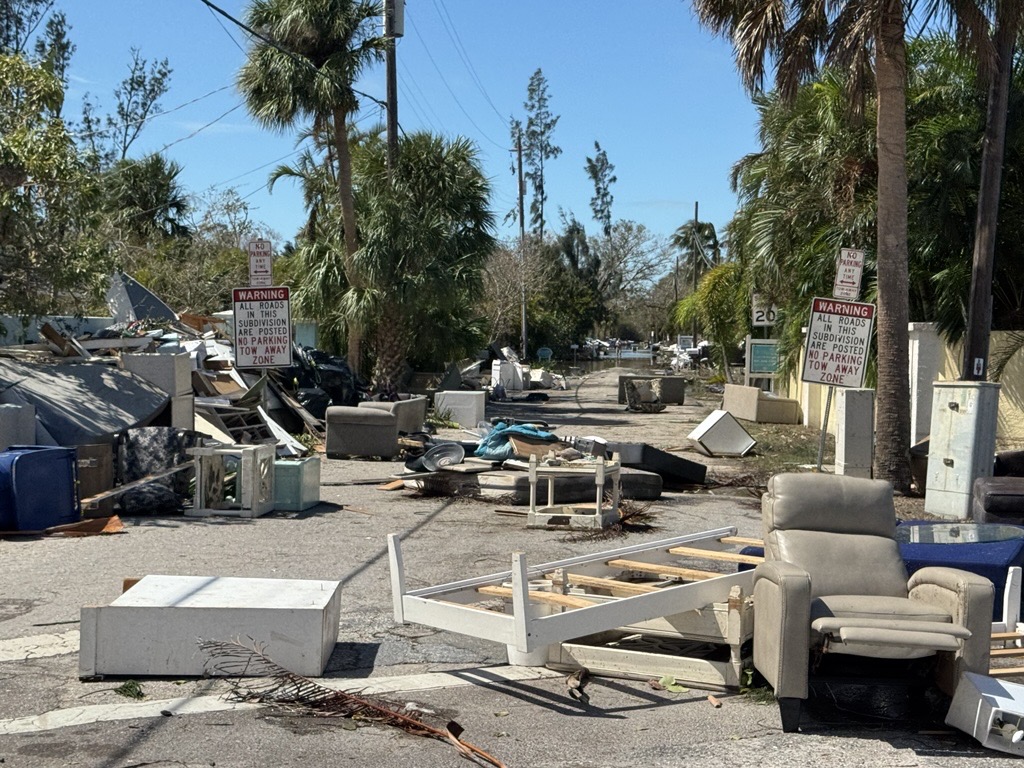
What we’re watching: Weekly disaster update, October 14
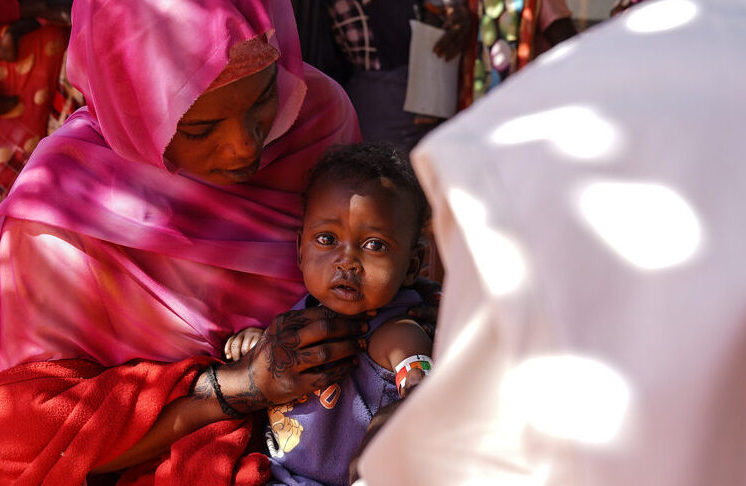
CDP launches a Sudan Humanitarian Crisis Fund

What we’re watching: Weekly disaster update, May 6
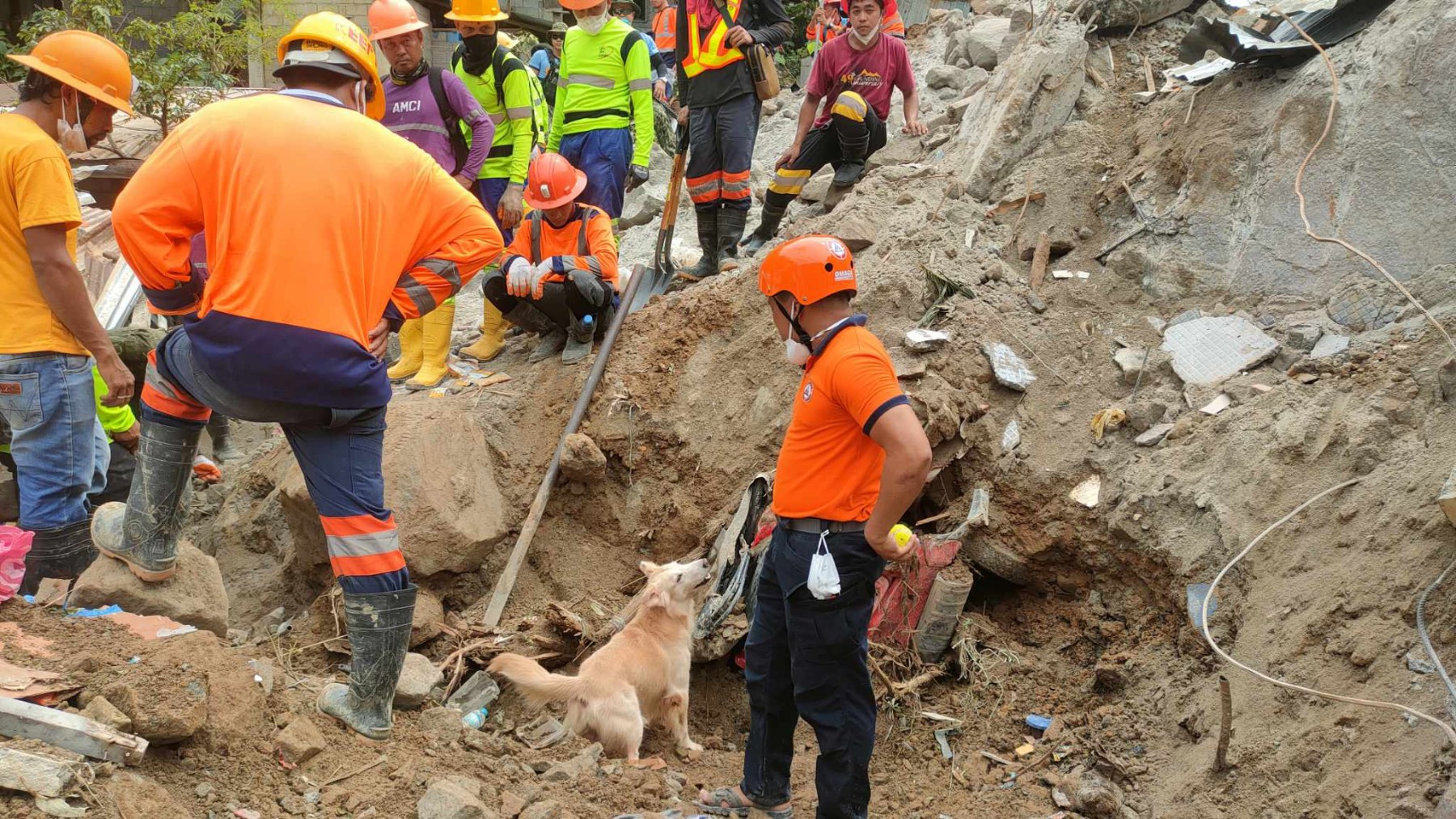
What we’re watching: Weekly disaster update, February 12

What we’re watching: Weekly disaster update, December 4
Famine, hunger and malnutrition
As of June 2025, half the population, or 24.6 million people, face acute food insecurity. Approximately 638,000 people are suffering from the most severe levels of hunger, the highest number in the world.
Where established humanitarian organizations can operate inside Sudan, they face disruptions from parties to the conflict. Where they can’t, local community kitchens and emergency response rooms (ERRs) have helped to feed people in need, but 80% of these organizations have closed due to recent funding shortfalls from foreign aid. The war has destroyed the economy, causing severe inflation, so even where food is available in markets, civilians cannot afford to purchase it. In displacement camps, the only food available is often flour mixed with sugar and water.
The U.S. has cut 83% of its foreign aid, and what will happen to the $126 million already committed to Sudan for 2025 is unclear. Regardless, aid cuts have come at the height of Sudan’s humanitarian needs, worsening a dire situation. A third of the way into 2025, Sudan has raised only 10% of the funding requested in its humanitarian response plan.
Jose Lopez, head of the Integrated Food Security Phase Classification (IPC) said, “The inability to prevent famine in Sudan represents a “collective failure, absolutely” of the political and humanitarian institutions that are supposed to protect people.”
Disease
Hunger makes people, especially children, more prone to disease. A malnourished child is up to 11 times more likely to die than a well-nourished one.
As of June 2025, over 20.3 million people need urgent medical care. However, 80% of hospitals in the most conflict-affected areas of Sudan are out of service, and only 45% are functional in other regions. Cholera has claimed over 1,640 lives since the crisis began, with malaria, dengue and measles also spreading rapidly.
Extreme weather
In 2025, Sudan is projected to endure warmer-than-normal temperatures, which will negatively impact people, livestock and crops. Extreme heat will exacerbate existing food shortages and water scarcity.
Sudan is one of the ten countries most vulnerable to climate change. These vulnerabilities include seasonal rains becoming more unpredictable and increasingly frequent droughts. Land degradation, desertification and deforestation compound the consequences of climate hazards.
Women and girls
At least 12 million people are at risk of gender-based violence (GBV), a number that has tripled since the beginning of the war, according to UN Women.
In a statement by the UN on Nov. 5, 2024, experts condemned the escalating violence against civilians in Sudan, as the ongoing conflict has driven the humanitarian crisis to catastrophic levels. “We continue to be deeply disturbed by the systematic use of sexual violence as a weapon of war, recently in Gezira State and more broadly during the conflict, and particularly by the RSF. This large-scale campaign, predominantly targeting women and girls, has been found to include rape, sexual slavery, forced marriage, and human trafficking under conditions of extreme violence that would amount to torture.”
“It is the first time in my life I have seen women who have been abused to that extent,” said Mohamed Refaat, head of the International Organization for Migration’s mission in Sudan.
There are many reports of women and girls committing suicide to avoid systematic rape and other types of violence. Should women and girls migrate either within or outside of Sudan, they face an extreme risk of sexual violence. Over 90% of women and girls who migrate towards the Mediterranean will be sexually assaulted or forced into sex work.
Children
As humanitarian access and aid shrinks, more children than ever need support in Sudan. Over 16 million boys and girls need protection against violence, hunger, disease and displacement.
According to UN News, “The situation is being compounded by a deadly combination of interlinked factors, such as a ten-fold surge in the number of grave violations against children, namely killing and maiming; abduction; recruitment and use in hostilities; rape and other forms of sexual violence; attacks on schools and hospitals; and the denial of humanitarian access.”
Additionally, 90% of children are out of school.
The humanitarian crisis in Sudan has exacerbated existing harmful coping mechanisms such as child marriage and reduced food intake. Sadly, an entire generation of Sudan’s children faces the extreme physical, psychological and emotional repercussions of living through unimaginable trauma.
Additional resources
For more information on the background, history and issues that have brought Sudan to the current crisis, please see:
- UNHCR: Sudan crisis explained
- The Economist: Why Sudan’s catastrophic war is the world’s problem
- Council on Foreign Relations: Civil war in Sudan
- CDP: 5 things you need to know about the Sudan humanitarian crisis
The Sudan humanitarian crisis needs a multi-faceted response. Funders can:
- Support locally-led action, such as national NGOs and mutual aid groups.
- Meet immediate humanitarian needs, an important initial step to allow improved recovery.
- Support vulnerable populations such as women, children, IDPs and refugees through protection and provision of essential services.
- Address the needs of host communities in neighboring countries.
Urgent needs
During any complex humanitarian emergency (CHE), urgent needs always include shelter, food, WASH, emergency health care, education, protection of at-risk populations and case management. These needs will continue throughout CHE. As the crisis becomes more protracted, issues include restoration of livelihoods, mental health, cash assistance, and preventative and chronic disease management.
Mutual aid and Emergency Response Rooms
Grassroots mutual aid organizations have created Emergency Response Rooms (ERRs) to provide health services, food and safe spaces for women and children in communities where humanitarian organizations no longer have access.
Local groups are currently the only aid providers able to reach those struggling to survive in much of Sudan. However, with recent cuts to foreign aid, about 80% of ERRs have had to close, with dire consequences for the two million civilians they supported.
A Localization Coordination Council (LCC) has been established as a coordinating body. The LCC plays a critical role in managing intake requests from across the country, prioritizing funds, resolving conflicts and facilitating collaboration. In August 2024, CDP provided a $50,000 grant to Adeela for Culture and Arts. This grant supported ERRs through micro-grants in coordination with the Localization Coordination Council.
Donors can support ERRs to help provide direct aid to communities living in war and build ERR capacity. Funders unable to direct grants to non-501c3 organizations can work through an intermediary, such as CDP’s pooled Sudan Humanitarian Crisis Fund.
During the Clinton Global Initiative 2024 Annual Meeting on Sept. 23, 2024, the newly formed Coalition for Mutual Aid in Sudan committed to channeling $2 million in emergency funds and other support to vetted networks of Sudanese responders by the end of 2024. The Coalition also pledged to draw attention to the humanitarian crisis in Sudan among peer philanthropies and mobilize an additional $4.5 million in contributions to expand the reach and capacity of Sudanese responders through 2026.
To learn more about ERRs and mutual aid, listen to The New Humanitarian podcast.
Cash assistance
As with most disasters and emergencies, disaster experts recommend monetary donations as they allow for on-the-ground agencies to direct funds to the most significant area of need, support economic recovery, and ensure donation management does not detract from disaster recovery needs and quickly re-establishing access to basic necessities.
In Sudan, where the conflict has severely curtailed physical movement and banking operations, digital banking applications and wallets have become a lifeline for many. Since the conflict, lack of cash has led many to utilize digital wallets to cover necessities, pay for travel and receive money from abroad. Financial applications, however, suffer from frequent telecommunication and power breakdowns.
CDP always recommends cash as an intervention and a recovery strategy. Direct cash assistance gives each family flexibility and choice, ensuring that support is relevant and timely. Cash-based approaches to disaster recovery also give people the freedom to choose how they rebuild their lives and provide a pathway to economic empowerment

Through CDP’s Sudan Humanitarian Crisis Fund, donors can support broad efforts that help address the critical needs of vulnerable, marginalized and at-risk groups, prevent and address famine, and build longer-term solutions that enable communities to recover. Donors may also support the life-saving efforts of local mutual aid groups, such as emergency response rooms, addressing the needs of at-risk communities amid limited resources. They can designate contributions to the Coalition for Mutual Aid in Sudan.
Contact CDP
Philanthropic contributions
If you have questions about donating to the CDP Sudan Humanitarian Crisis Fund, need help with your disaster-giving strategy or want to share how you’re responding to this crisis, please contact development.
(Photo: Homes destroyed by the violence between Sudanese Armed Forces and Rapid Support Forces in Sudan, April 2023. Photo courtesy of Patty McIlreavy.)
Recovery updates
If you are a responding NGO, please send updates on how you are working in this crisis to Tanya Gulliver-Garcia.
We welcome the republication of our content. Please credit the Center for Disaster Philanthropy.
Resources
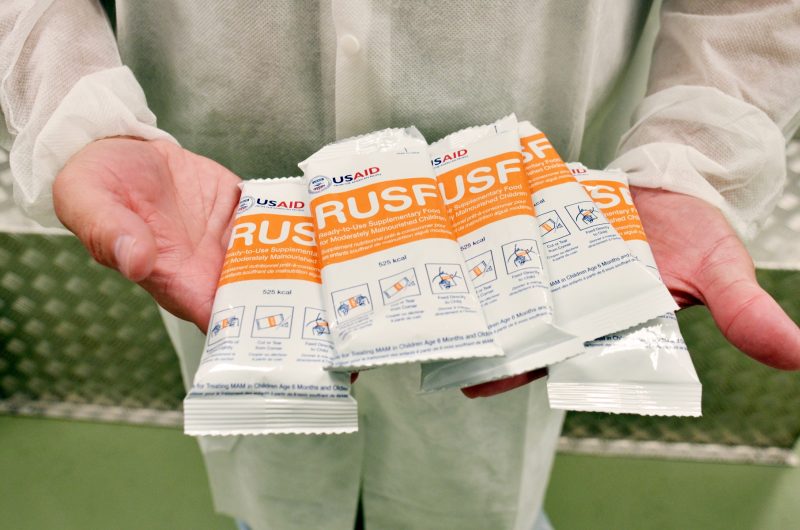
Famine
According to the United Nations’ definition, a “famine” has taken hold when: at least 20 percent of households in an area face extreme food shortages; more than two people in 10,000 are dying each day (from both lack of food and reduced immunity to disease); and more than 30 percent of the population is experiencing acute malnutrition.
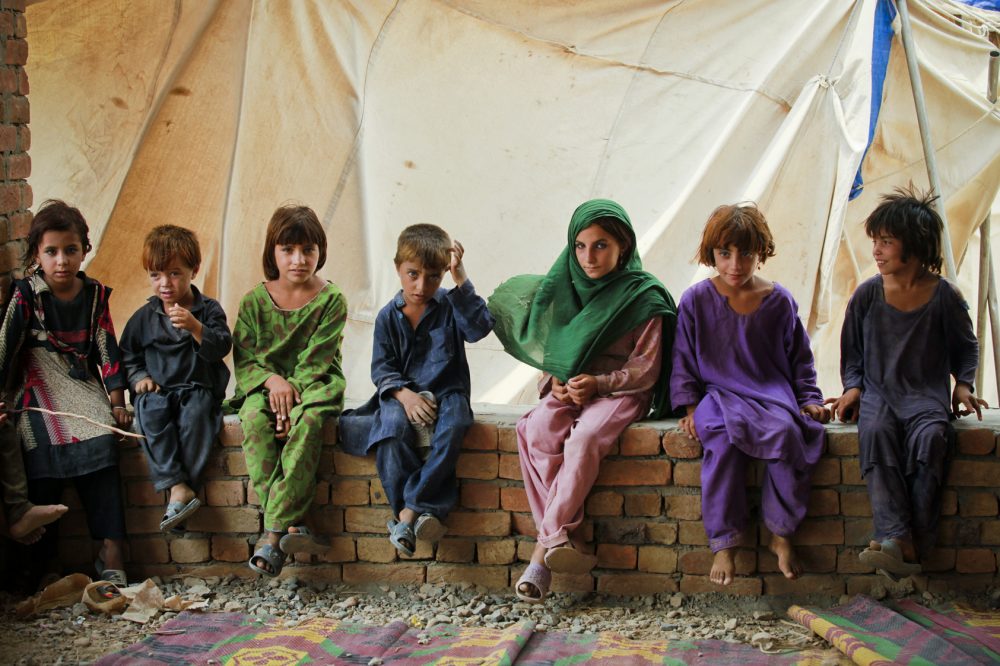
Internally Displaced People
Internally displaced persons are those who have been forced to flee their homes, in particular as a result of armed conflict, generalized violence, violations of human rights or disasters, and who have not crossed an internationally recognized border.
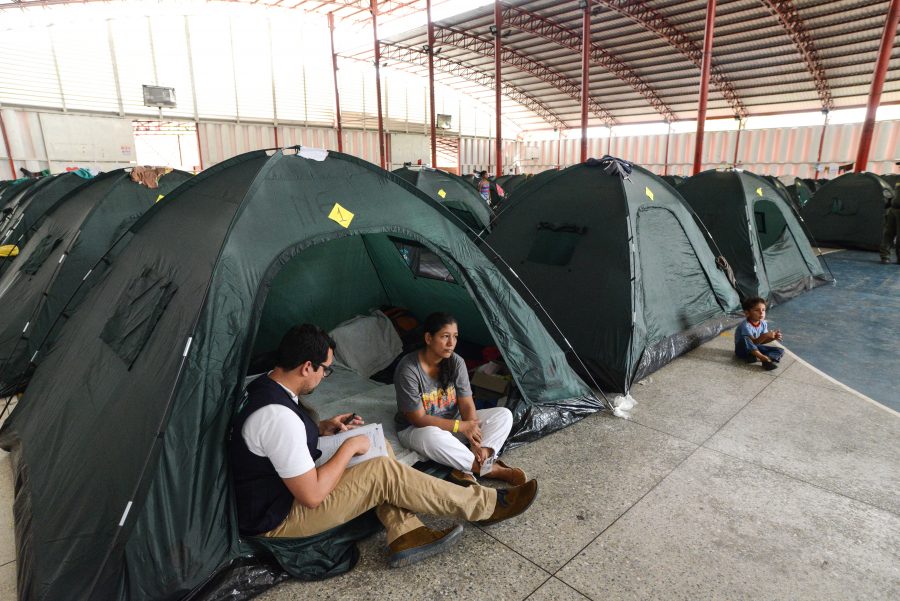
Complex Humanitarian Emergencies
CHEs involve an acute emergency layered over ongoing instability. Multiple scenarios can cause CHEs, like the civil wars in Syria and Yemen, the man-made political crisis in Venezuela, or the conflict in Ukraine.